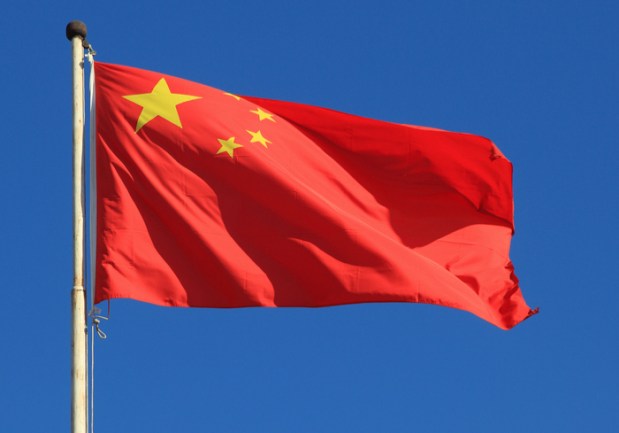American Brands Are Bullish On Retail Expansion In China

American retailers are heading east: They’re opening the doors to brick-and-mortar stores in China, while listing on China’s dueling marketplaces — Tencent and JD.com. Walmart, for example, brought a small-format supermarket to the city of Shenzhen as the popularity of “small retail” grows in China.
And, like many retailers in China, Walmart’s small-store rollout comes with a digital payments option. Shoppers can pay for items using a program within Tencent’s WeChat while shopping.
Walmart is hardly alone in its brick-and-mortar and eCommerce efforts. Brands from L Brands — which counts Victoria’s Secret in its portfolio — and Ralph Lauren, as well as Starbucks, are bullish on China. Here are their executives on how they plan to build their brands in the country.
L Brands
Martin Waters, L Brands’ chief executive and president, said in the company’s post-earnings conference call on Thursday (May 24) that China represents a “significant market.” As a result, L Brands seeks to expand its brick-and-mortar footprint in the country, and the results are promising so far: Its Victoria’s Secret beauty and accessories stores — five of which opened in the fourth quarter of 2017 — “are progressing about in line with our initial expectations,” Waters said. For the remainder of 2018, the company plans to open the doors to 10 additional full-assortment brick-and-mortar stores.
Though L Brands enjoys good brand recognition, the company still needs to make its brand’s value proposition better known, as well as work on communicating what “the brand stands for and what role the brand can play in our customers’ lives,” Waters said. To do so, the company is turning to digital by building its “digital file” and “rapidly” growing its eCommerce channel.
The company has made progress on the eCommerce front so far. In the company’s fourth-quarter post-earnings conference call in February, Waters said the company is going through three phrases in the eCommerce field. First, it started with Tmall Global, shipping from North America with a lead time of 14 days. Second, it moved to Tmall Local with next-day shipping. Last, it planned to add the China.cn site.
Beyond eCommerce, the retailer plans to promote the brand in “a very important and aspirational way” with the opening of a flagship store in Hong Kong. Adding to stores in Beijing and Shanghai, the stores themselves serve as “important beacons for the brand,” Waters said in the first-quarter conference call.
Ralph Lauren
For Ralph Lauren, expanding on the brand’s digital and international presence is a “key initiative.” The company sees a growth in its existing stores in the country. According to Ralph Lauren’s CEO Patrice Louvet in a post-earnings conference call on Thursday (May 24), the company reported a 25 percent sales growth in Mainland China in fiscal 2018.
Louvet said, “Our new small-format stores, a key component of our omnichannel growth strategy in the region, are performing well.”
In terms of brick-and-mortar presence, Ralph Lauren finished off fiscal 2018 with 111 directly-operated stores and concessions within Greater China. That store count represented a net increase of 28 percent compared to fiscal 2017. Beyond brick-and-mortar stores, Ralph Lauren, too, was on eCommerce platforms like Tmall, JD.com and WeChat. Going forward, Ralph Lauren “remain[s] on track to reach our goal of $0.5 billion of revenue in five years in Greater China, especially as we continue to raise our brand awareness and perception,” Louvet said.
Overall, in the broader Asian market, Ralph Lauren saw positive results. Ralph Lauren’s Chief Financial Officer Jane Nielsen said in the call that the retailer experienced a “strong performance across every market in Asia, including 6 percent growth in Japan, 34 percent growth in mainland China and 22 percent growth in Greater China, all in constant currency.”
In the region, the company plans to double down on its digital efforts — and work with local celebrities and influencers. Nielsen said, going forward, “we expect further comp growth in Asia as we continue to upgrade our distribution network and marketing initiatives to amplify and elevate the brand.”
Starbucks
Similar to apparel retailers, Starbucks sees China as a market for its coffee shops. Though the quick-service coffee chain has 3,200 company-operated stores in 141 cities across Mainland China, it sees even greater potential in China. In April, Starbucks CEO Kevin Johnson said on a post-earnings conference call, “The opportunities for Starbucks in China, which are significant, are growing along with the size and scale of our business.”
Yet, the company is no stranger to China — it’s been in the Chinese market for 20 years. According to Johnson, the middle-class population in China stands around 600 million people, which could provide an expanded market for the company. He said, “No Western company or brand is better positioned to benefit from the rapidly expanding Chinese middle class [than Starbucks].”
Why is Starbucks is so confident in its ability to expand in the country? Though some American companies might have difficulty breaking into the Chinese market, Starbucks has a major advantage: The retailer is already there. The result? Starbucks can use its existing presence to help caffeinate the country’s still-young coffee culture.
How successful will Starbucks, Ralph Lauren and L Brands be in the Chinese market in the long-term? Time will tell.
